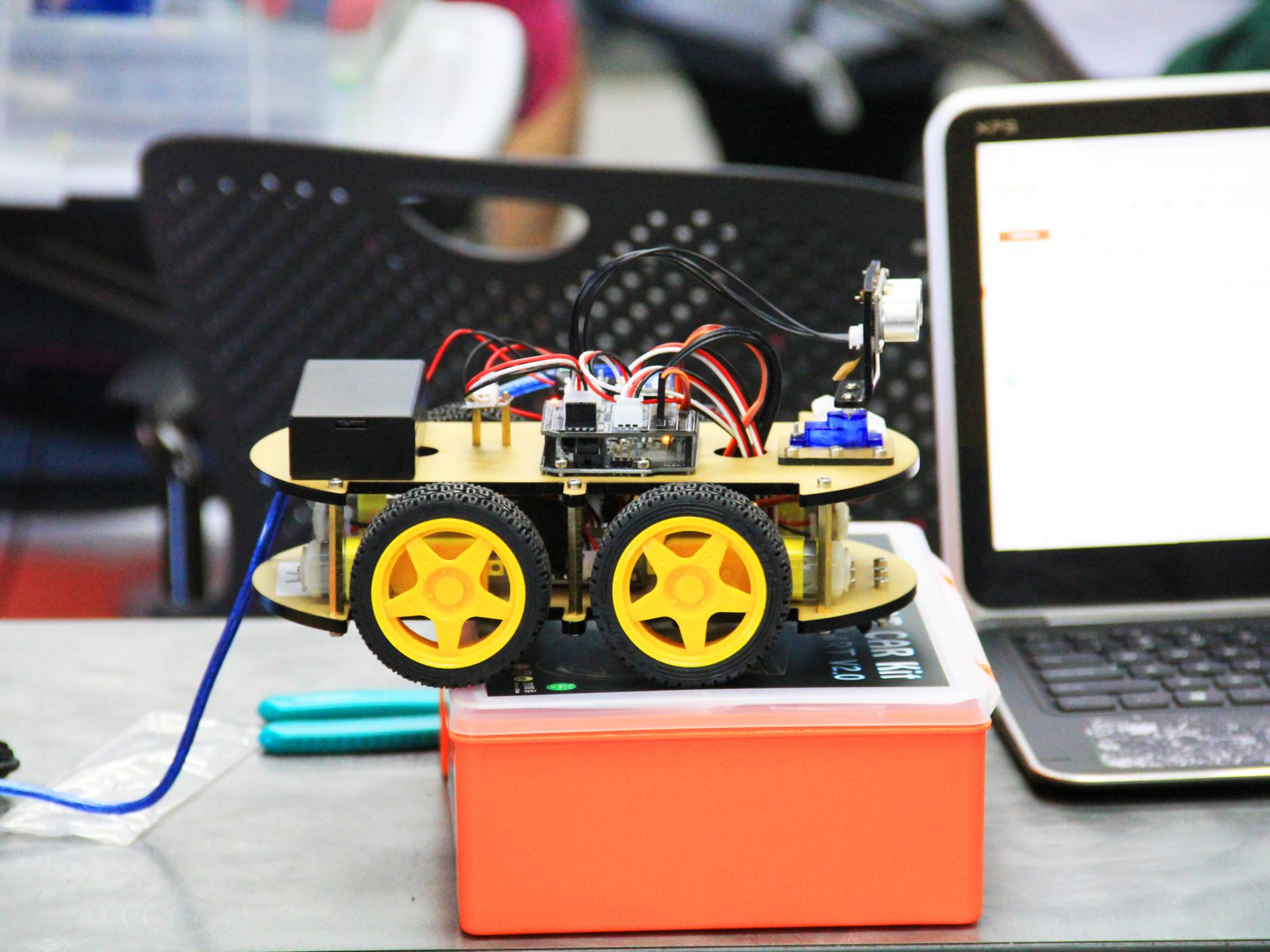The TL;DR
- The Center for K12 STEM Education connects underrepresented students and their teachers to leading-edge science, technology, engineering, and mathematics (STEM) training.
- NYU undergraduates can work with the center as instructors, teaching young scholars specific STEM skills.
- The center’s overarching goal is to diversify STEM fields, making them more accessible to the next generation of innovators.
Every year students and faculty at NYU engage in cutting-edge research in robotics, genetics, artificial intelligence, and more. Yet, in many areas of the country—including some near NYU’s campus in New York City—students are not widely exposed to these subjects. But an organization within the Tandon School of Engineering seeks to bridge that gap: the Center for K12 STEM Education.

Making STEM Education Accessible
The Center for K12 STEM Education is a hub for transformative educational opportunities, dedicated to nurturing the next generation of STEM leaders. “We’re committed to increasing representation of underrepresented groups in STEM, including women and people of color. Additionally, we want to make STEM education more accessible,” says Ben Esner. He’s the center’s director. To achieve this, the center hosts dozens of programs that bring in-person STEM lessons to students of all ages and provide guidance and resources to their teachers. For example, its summer sessions cover topics like machine learning, virtual reality, and connected devices.
What’s more, about half of these programs are free. For example, 570 students participated in summer sessions at no cost during 2023. Among this cohort, 65 New York City high school students participated in a special program called ARISE (Applied Research Innovations in Science and Engineering). There, they received training, mentorship, and lab experience in STEM fields.

Grounded in the Real World
Aysha Naveed is a current NYU student who previously participated in ARISE when she was in high school. Through the program, she worked directly with PhD students in the Soil Mechanics Lab. There, she did digital image modeling and analysis. Furthermore, she presented her work at a symposium.
Through ARISE, other high school students like Aysha have conducted research to create better solar cells, use chemical engineering to deliver cancer drugs, and investigate bias in the automated systems we encounter and interact with every day. This focus on real-time research and real-world application is a hallmark of the Center for K12 STEM Education. “We always try to take the socially relevant research that’s going on at NYU and make that relatable to younger students,” says Esner. “Tandon is an applied engineering school. So, very little of what goes on here is theoretical. We’re trying to solve real-world problems.”

Guided by Undergraduates
Today, Aysha is a sophomore Civil Engineering major at Tandon. Following her experience with ARISE, she decided to concentrate her studies on environmental engineering. Then, in 2022, she worked at the Center for K12 STEM Education as an instructor herself. While there, she taught a course called Science of Smart Cities to middle schoolers, introducing them to concepts like circuitry and coding. In the class the students built a model city, incorporating features like automated cars, sensors, and water systems.
Each year the Center for K12 STEM Education hires nearly 60 undergraduate and graduate students to teach summer session classes like Aysha’s. It’s a chance for NYU students to develop professionally and engage in socially relevant work that makes a difference—all while earning a paycheck.

A Community Within Tandon
Beyond its job opportunities, the Center for K12 STEM Education provides students with a sense of belonging. “Part of the appeal for undergraduate students is the community. You get to pay it forward, gain meaningful experience, and diversify the STEM fields,” says Esner.
“The best thing about the center is that it’s really such a community,” Aysha says, echoing Esner’s belief. “With so many people at NYU, you might not always know where you fit. However, I connected with people at the center and spent time with the community they’ve built there. Their door is always open.”



